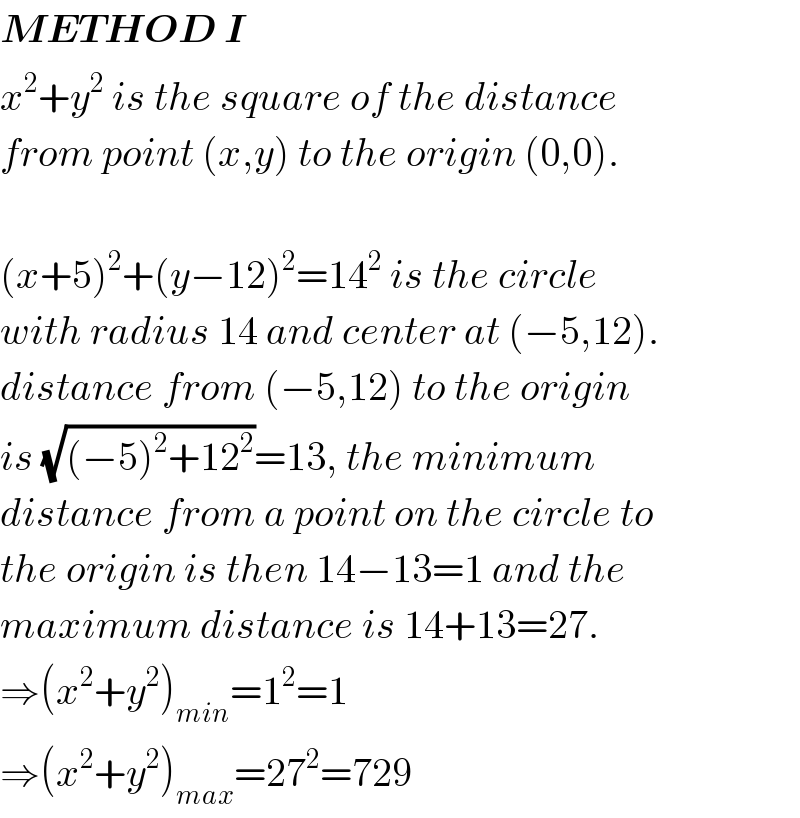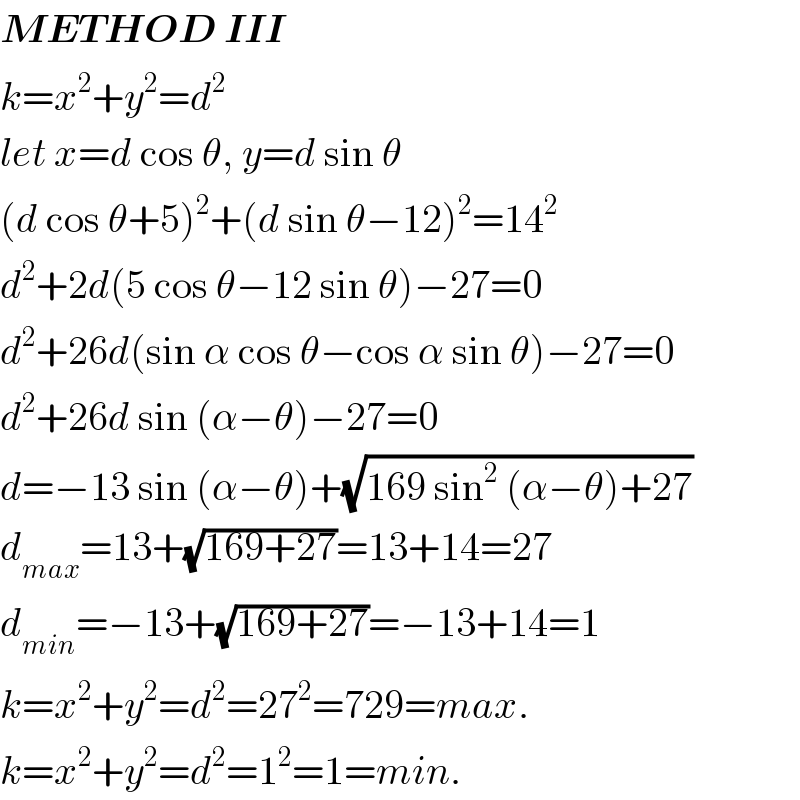
Question and Answers Forum
Question Number 102078 by Jamshidbek2311 last updated on 06/Jul/20

Answered by mr W last updated on 06/Jul/20

Answered by mr W last updated on 06/Jul/20
![METHOD II k=x^2 +y^2 F=x^2 +y^2 +λ[(x+5)^2 +(y−12)^2 −14^2 ] (∂F/∂x)=2x+2λ(x+5)=0 ⇒x=−((5λ)/(λ+1)) (∂F/∂y)=2y+2λ(y−12)=0 ⇒y=((12λ)/(λ+1)) (−((5λ)/(λ+1))+5)^2 +(((12λ)/(λ+1))−12)^2 −14^2 =0 5^2 (1−(λ/(λ+1)))^2 +12^2 (1−(λ/(λ+1)))^2 −14^2 =0 13^2 (1−(λ/(λ+1)))^2 =14^2 ⇒1−(λ/(λ+1))=±((14)/(13)) ⇒λ+1=±((13)/(14)) ⇒λ=−(1/(14)) or −((27)/(14)) with λ=−(1/(14)): x=−5×((−(1/(14)))/(1−(1/(14))))=(5/(13)) y=12×((−(1/(14)))/(1−(1/(14))))=−((12)/(13)) ⇒k=x^2 +y^2 =((5/(13)))^2 +(−((12)/(13)))^2 =1=min. with λ=−((27)/(14)): x=−5×((−((27)/(14)))/(1−((27)/(14))))=−5×((27)/(13)) y=12×((−((27)/(14)))/(1−((27)/(14))))=12×((27)/(13)) ⇒k=x^2 +y^2 =(−5×((27)/(13)))^2 +(12×((27)/(13)))^2 =729=max.](Q102102.png)
Answered by mr W last updated on 06/Jul/20

Answered by mr W last updated on 06/Jul/20

Answered by john santu last updated on 07/Jul/20
![method JS x^2 +y_(min) ^2 = [ r −(√(x_c ^2 +y_c ^2 )) ]^2 x^2 +y_(max) ^2 = [ r +(√(x_c ^2 +y_c ^2 )) ]^2](Q102166.png)
